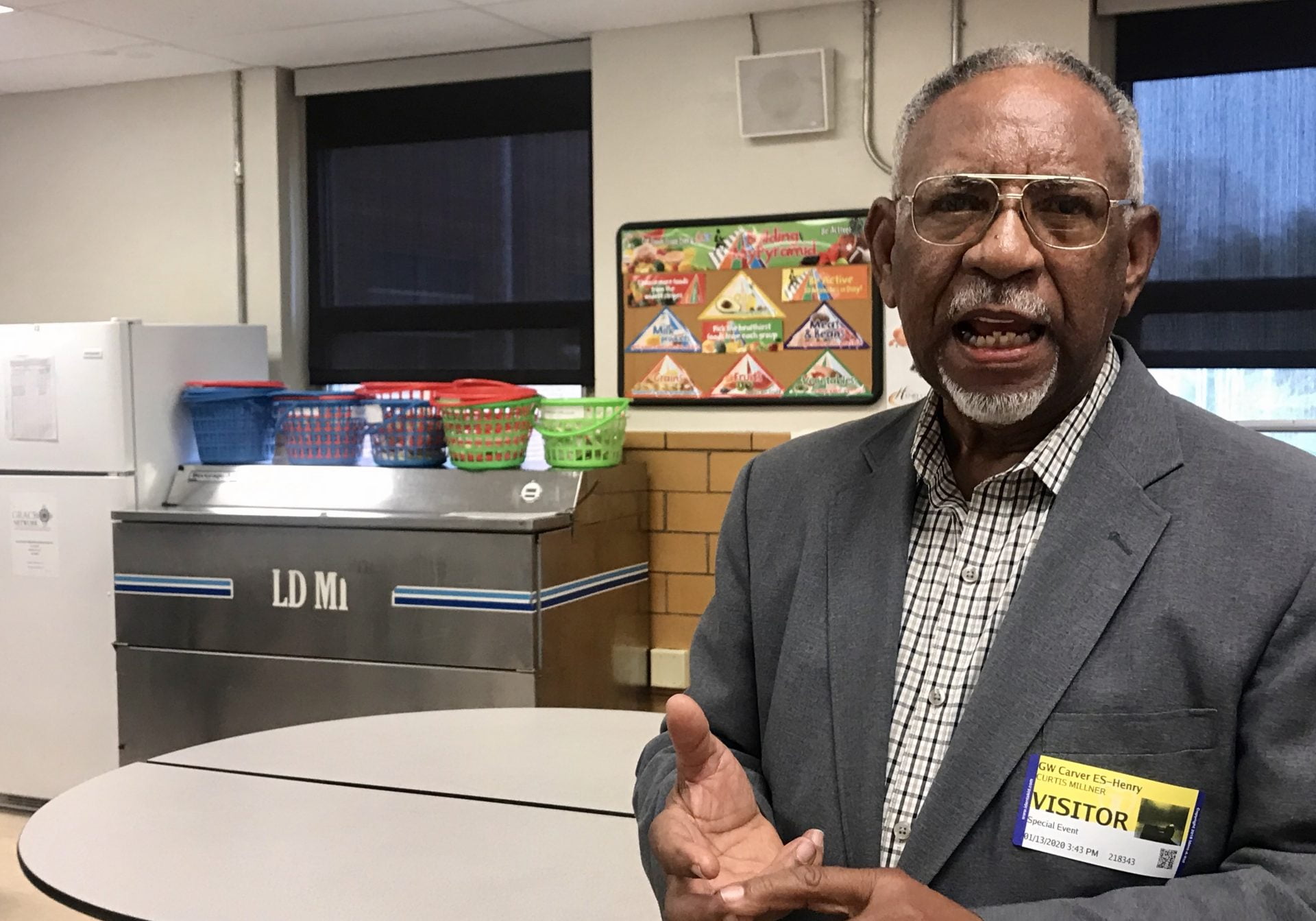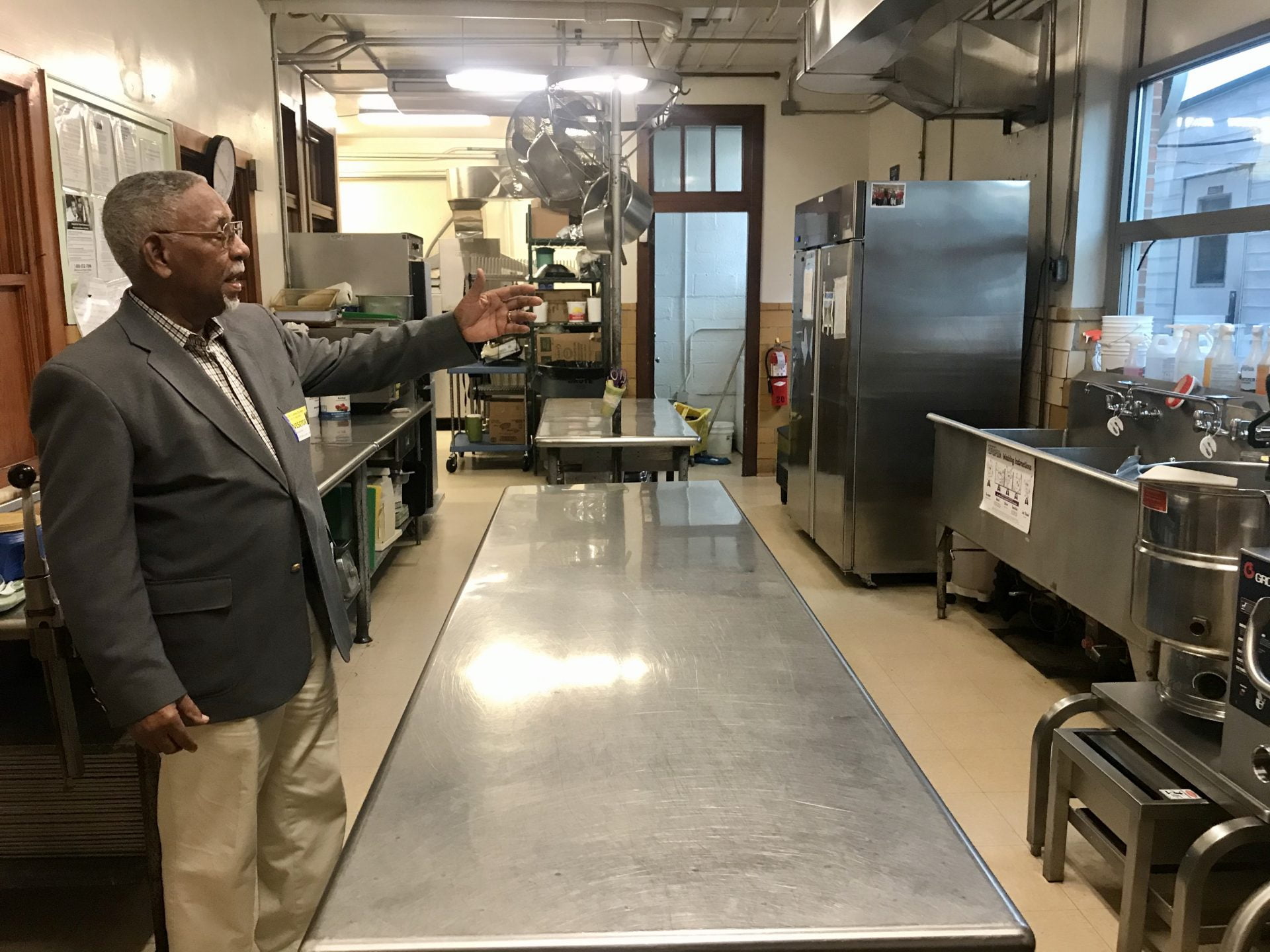
By Brandon Martin
A former school board member addressed Henry County School officials recently about an ongoing issue at G. W. Carver Elementary School.
Curtis Millner, who served as the Iriswood District school board representative for a number of years, said repairs/upgrades at Carver do not appear to be “the top priority on many people’s list.”
Millner’s relationship with the historically black school dates back to 1954, when he attended the school, graduating in 1960 from the then-high school.
He returned to the school as a teacher 23 years later, leaving when the then-high school closed in 1989. G.W. Carver Elementary School is one of nine elementary schools in Henry County. With a population of around 550-600 students, the school is the second largest of the nine, according to Millner.
“I left here in 1960. There were 562 students, according to the yearbook, and there was really not much of a problem as far as eating, Millner said.

Millner, who volunteers at Grace Network, said he now visits Carver and other area schools every other week as part of his duties and to “pick up the excess food and bring it back to Grace for them to redistribute it.”
The Carver alumnus said that Grace Network has their own refrigerator in each cafeteria, but that is a far cry from Carver.
Each time he visits the school to pick up the excess food, he is met with the sight of chrome freezers and refrigerators nestled close to cafeteria walls.
“All of that equipment originally belonged in the kitchen but they put it in the cafeteria because it can’t fit in the kitchen,” he said, noting the kitchen area is too small to accommodate the refrigeration units.
As he walked into the kitchen, Millner said “it is remarkable how they (cafeteria staff) get any work down back here. There is only one other school that may have a smaller kitchen area and that’s Sanville Elementary School. They have about 260 students.”
Millner said that there have been opportunities in the past to address needed upgrades at Carver, but things haven’t seemed to pan out. As it stands now, the cafeteria and kitchen have not been remodeled since he attended the school 60 years ago.
The repairs/upgrades “was number three on the list of top ten priorities when I left the school board two years ago. Somehow, or another, over those two years, it must have slipped,” Millner said, adding that he does not know why the work has not yet been addressed.
“When we had the grand consolidation and merged the five schools, money was supposed to come back to remodel the existing schools. This was one of the first schools that was remodeled,” he said.
Millner said that the school has doubled in classroom space since he was a teacher at the school of 800-900 students. “Since the 60’s, the locker rooms have been converted into classrooms. The shops have been converted into classrooms.”
“As to why the cafeteria was missed, I’m not sure,” he said adding “and maybe I deserve some of the blame because I was on the school board then but when Drewry Mason was remodeled, the cafeteria was too.”
Millner said he wasn’t unreasonable and that “I can understand emergencies. I can understand the situation with Bassett. I have history with Bassett. That roof has leaked since it was first built so making that stuff a priority, I get.”
Millner said that “other than the cafeteria, I don’t see anything else that this school needs as far as physical structure” but he was worried about the impact that inaction could have on students and staff at the school.
“Once they become aware of the fact that this situation has existed, it feels like they are being treated less than by the school system as far as priorities and renovations,” he said drawing on the school’s past with the separate but equal status.
Speaking on the school integration process, Millner said, “Pittsylvania County, they have four high schools. They are strategically located in the four corners, the middle schools are right beside them and in some cases, one of the elementary schools is right there with them too. It makes it much easier for transportation. It makes it much easier for parents with kids in multiple grades and taking them back and forward.”
In contrast, “Henry County fought it. Henry County’s response was to build schools for the black students,” Millner said.
G.W. Carver Elementary was built in 1950 and named after the African American agriculturist, chemist, inventor, and educator George Washington Carver. Since, it has served the African American community in Henry County, integrating faculty in 1967 and integrating students in 1971.
“Historically, when schools were integrated, the black schools were always the ones that were closed,” Millner said.”This is the only remaining one that was previously a black school. So, it has a lot of historical significance to the black community. ”




